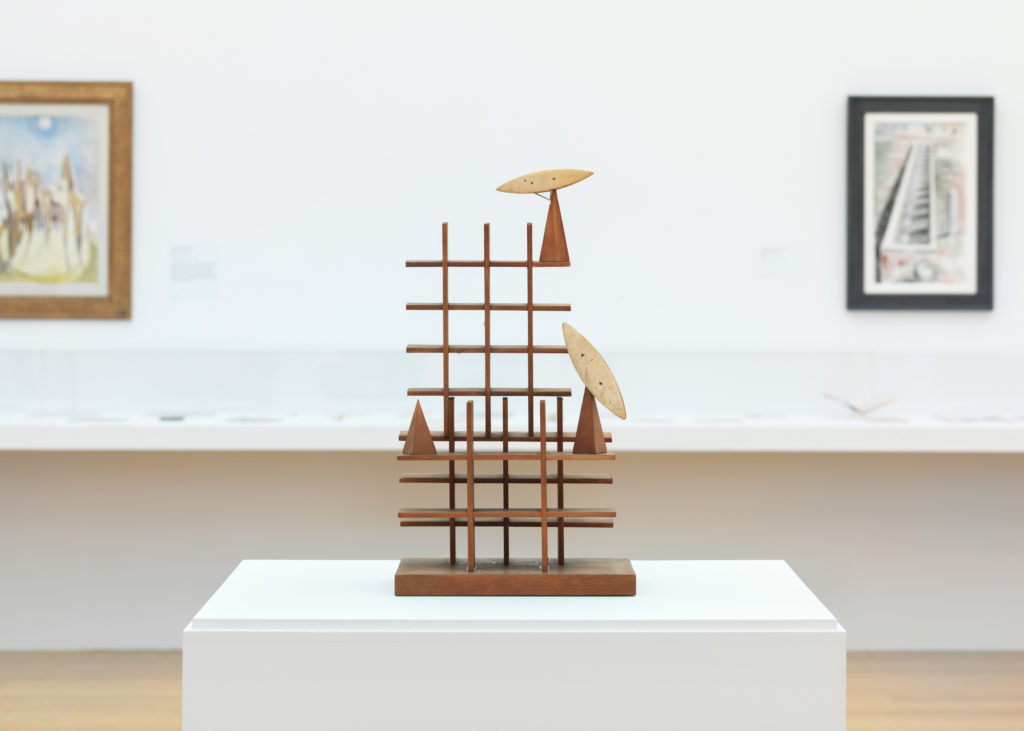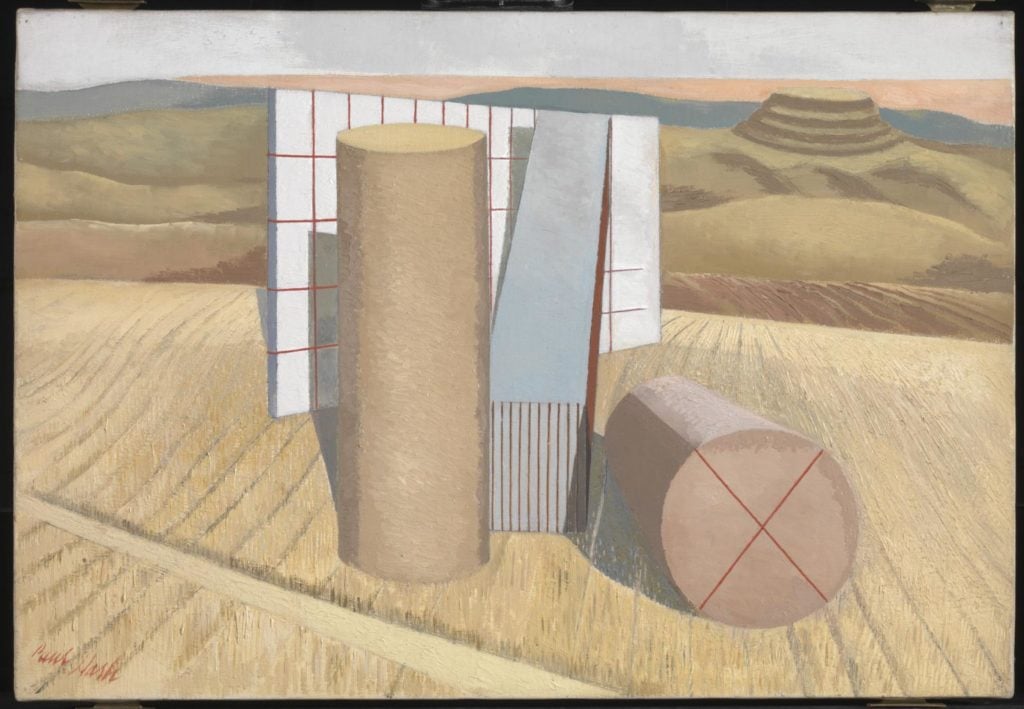Art World
Paul Nash Sculpture Thought Lost for Decades to be Shown at Tate Britain
It is included in the artist's first large-scale exhibition in a generation.

It is included in the artist's first large-scale exhibition in a generation.

Caroline Elbaor

A sculpture by British surrealist Paul Nash thought to be lost for decades was found this year stored away in a cardboard box in a London archive. The work will go on view for the first time in 74 years at the Tate Britain in a Nash retrospective slated to open Wednesday.
Moon Aviary, long considered to be either lost or destroyed, was discovered earlier in 2016 in a box among “pieces of wood and ivory bobbins” in a privately-owned archive, according to the BBC. The 1937 work is comprised of egg crates and bobbins that sit delicately atop triangle-shaped figures meant to symbolize roosting birds.
Emma Chambers, co-curator of the Tate Britain exhibition, confirmed the sculpture’s authenticity after comparing it to photographs from the 1930s and ’40s. “It was an immensely exciting moment,” she recounted to the BBC. “It’s the sort of moment that you really dream of as a curator, where something that you thought no longer existed suddenly pops up.”

Paul Nash, Equivalents for the Megaliths (1935). Courtesy Tate.
Nash was particularly renowned for his exploration of Southern English landscapes and his lingering interest in Britain’s history.
The retrospective will be Nash’s largest to be staged in a generation. In addition, it will be the first to “examine his dialogues with international artists as one of the leading figures in British surrealism,” according to the press release. His work will be shown alongside that of other British modernists, including John Armstrong, Barbara Hepworth, Tristram Hillier, Ben Nicholson, Henry Moore and Edward Wadsworth.
“Paul Nash” will be on view at the Tate Britain from October 26, 2016 – March 5, 2017.